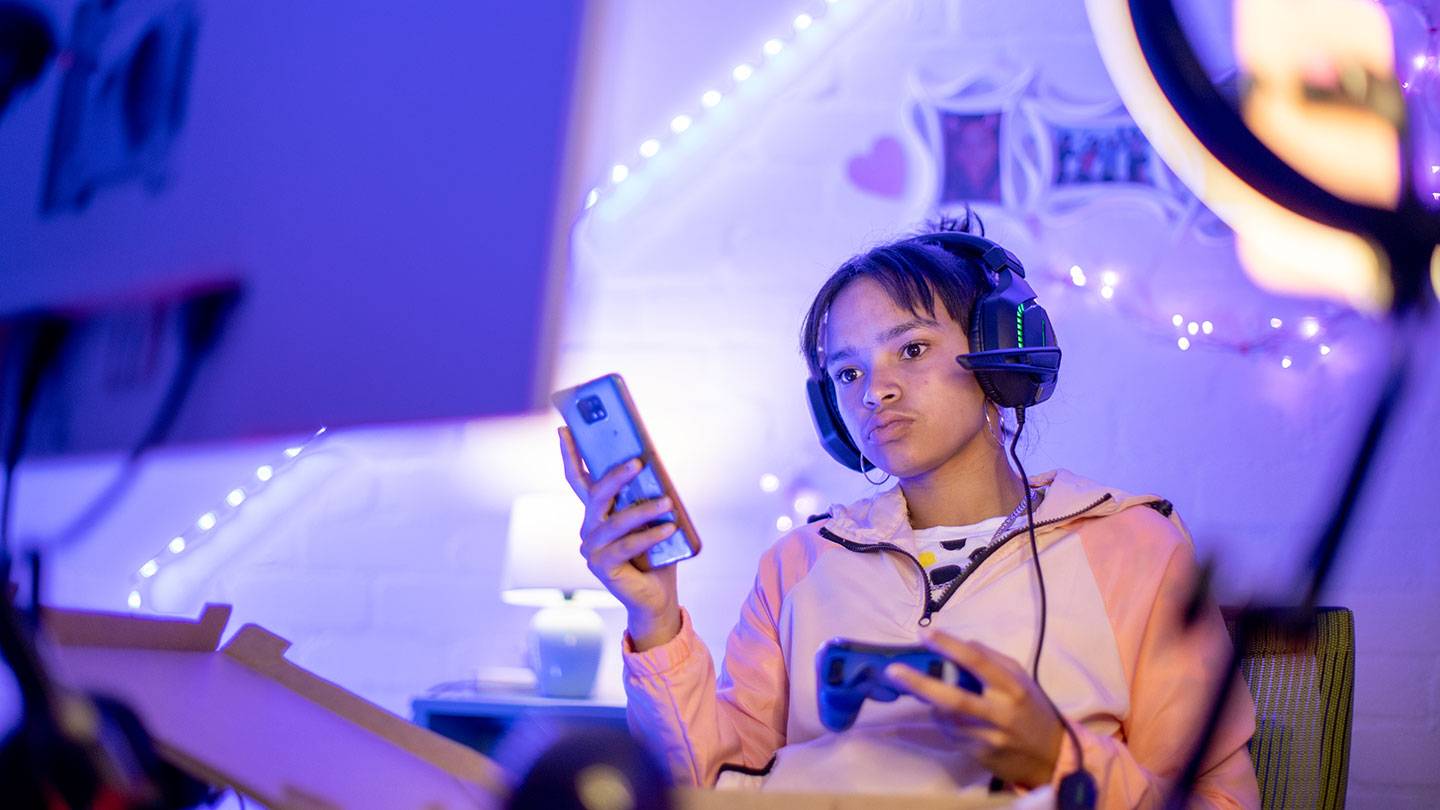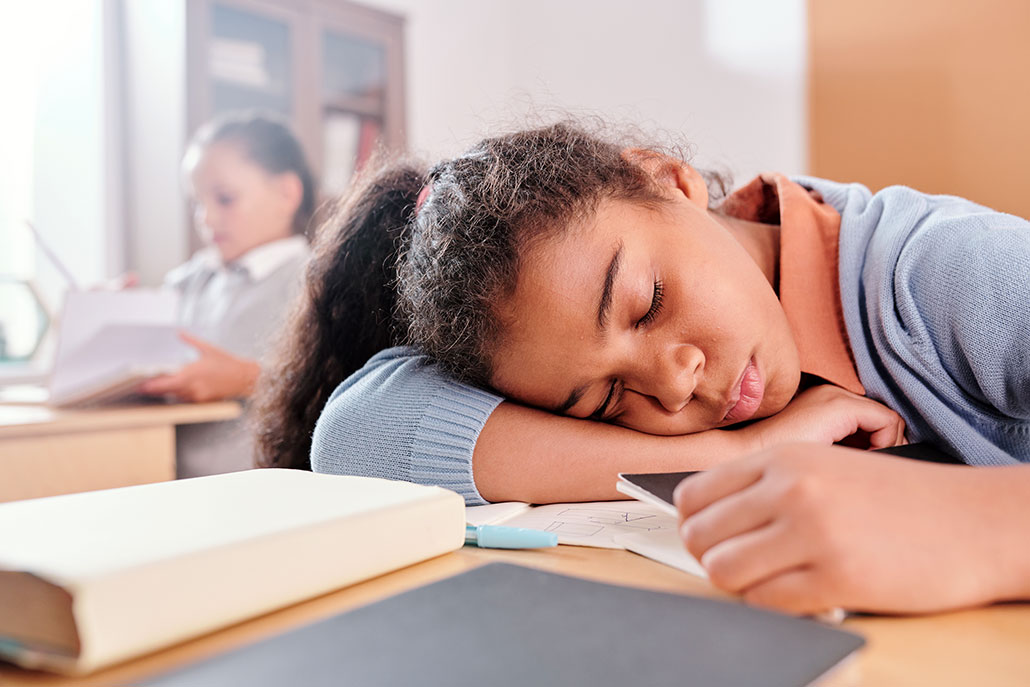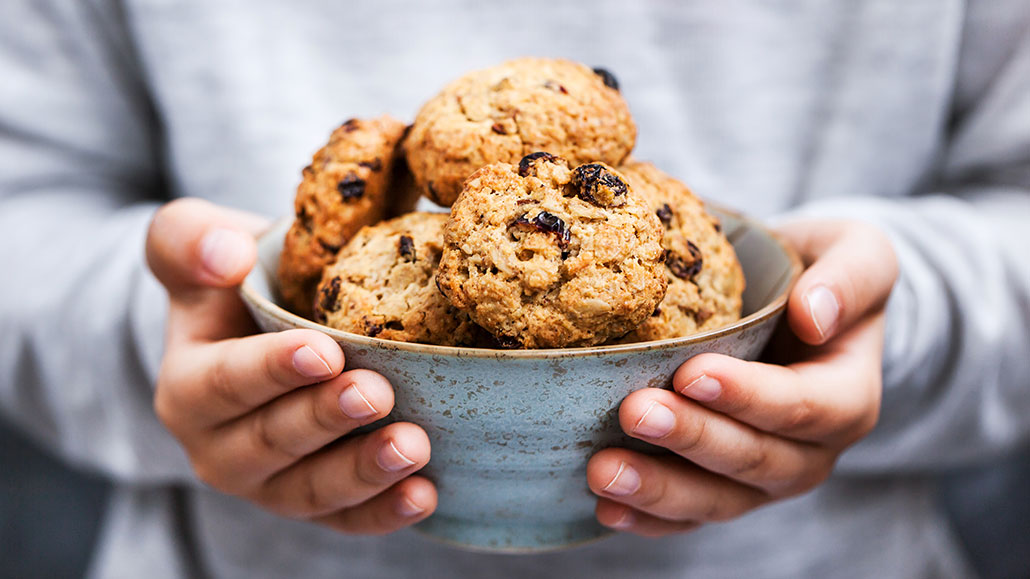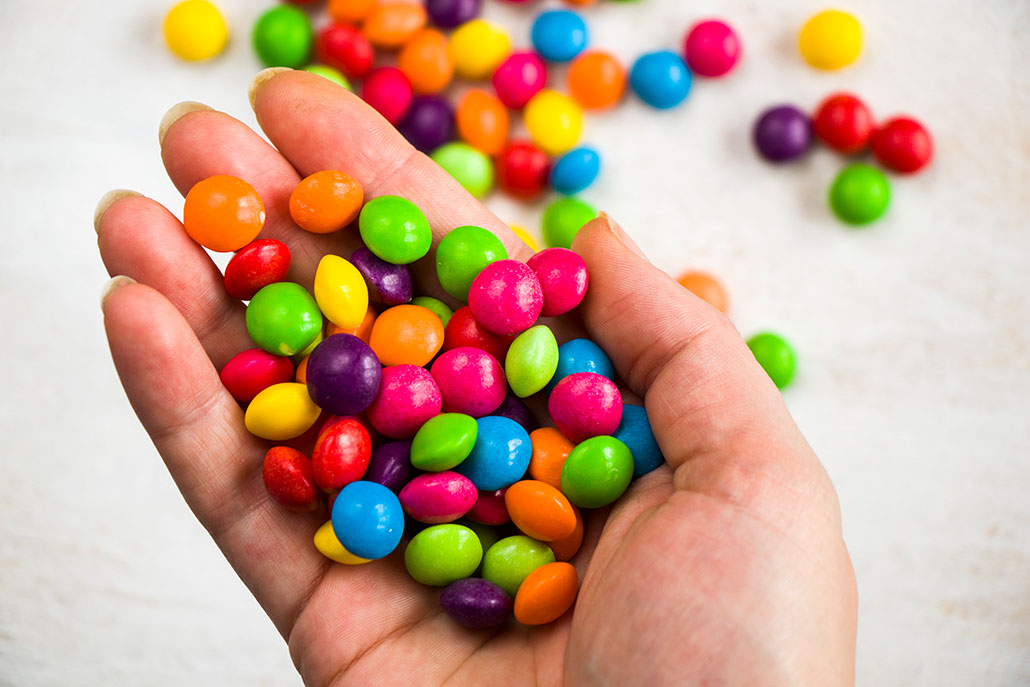You’re too distracted. Here’s why that matters and what to do about it
Better screen time, sleep, diet and exercise habits can help you can take back your focus

Multitasking, digital devices and lack of sleep can all lead to distraction and loss of focus.
Alistair Berg/DigitalVision/Getty Images Plus
I have a confession. Every time I sat down to work on this article, I got distracted.
The dogs wanted attention, so I petted them. My phone would ding when a text came in, so I got up to check. I was tired, so I took a nap. And I might have gotten sucked into some extended time scrolling through Instagram. It was remarkably difficult to focus on writing about distractions because, well, I was too busy being distracted.
Distraction is a tricky thing. Often, we don’t feel like we’re distracted. In fact, we think we’re paying attention, often to multiple things at once.
But science has shown that we aren’t truly capable of multitasking. Our brains evolved to stay focused on one or two things at a time. When we multitask, our brains actually quickly switch from one task to another. It feels seamless. But it’s not. It comes with major consequences for our ability to pay attention and think deeply about things.
I’m hardly alone in being easily distracted. People generally have become more distracted than ever before. But don’t despair! There are steps we all can take to reduce distractions and boost focus. These include changes in screen time, sleep, diet and exercise. Making a few changes can make you a safer driver. They also can make you a more attentive friend — and even help you do better in school.
Do you have a science question? We can help!
Submit your question here, and we might answer it an upcoming issue of Science News Explores
Set new screen habits
For many of us, phones are one of the biggest distractors in our lives — and that’s no accident. Our phones have trained us to be on constant alert, says Gloria Mark. She studies digital distraction at the University of California, Irvine. “We pick up our phones when we see them,” she says. Try it sometime: Walk by your phone without checking it. How hard is it to leave the phone untouched?
That pull to constantly check for notifications isn’t accidental. The people who create social media software use algorithms to figure out when to send those little reminders.
“Notifications can distract us because they use information to elicit emotional responses,” Mark explains. “We can’t help but respond when an ad or notification brings out an emotion in us, like surprise or fear.” That’s why it’s so hard to resist checking for new content.
A recent survey found that adults check their phones about 58 times a day. Many of those checks are for just a few seconds. Still, they add up in a big way. That’s because it takes time for our brains to return to what we were doing before the interruption. That delay can have a real impact on how well we focus on the next task.
For people old enough to drive, such distractions are downright dangerous. One in three teens admits to using their phone while driving. Eyes that are on a phone aren’t looking at the road. And this slows reaction times. In fact, texting teen drivers are 23 times as likely to crash as their non-messaging peers. That’s according to the U.S. National Highway Traffic Safety Administration.

But it’s not just when you’re behind the wheel that phone distractions can have serious impacts.
“Social media can be super fun,” says Teun Siebers. He studies social media and teen behavior at the University of Amsterdam in the Netherlands. Checking your social media can “also make it tricky to focus on important stuff like schoolwork,” he notes.
Imagine you’re super focused on a project with a great idea for what to do next. Then your friend sends you a funny video. When you get back to the assignment, you’ve lost track of what you were doing. “It takes a while to get back into the work,” Siebers says. “And you might forget some of your good ideas.”
In one 2022 study of 383 seventh and eighth graders, Siebers found a strong link between social media use and how distracted people felt. Teens in the study installed an app on their phones. Several times a day, the app prompted them to answer questions. These focused on social media use and distraction during the previous hour. Teens who reported spending more time on social media said they generally were more distracted.
What’s more, teens reported feeling less distracted at times of day when they were not using social media. As they spent more time on their phones, their distraction climbed. That was true for a whopping 83 percent of participants.

Educators and Parents, Sign Up for The Cheat Sheet
Weekly updates to help you use Science News Explores in the learning environment
Thank you for signing up!
There was a problem signing you up.
Curiously, teens who used social media the most said they felt less distracted. It’s probably not that they were less distracted. More likely, they didn’t recognize distractions for what they are, Siebers says. “They might not even realize that messages from social media are distractions because they’re using it so much.”
Need help overcoming the temptations of social media? Turn off notifications, Siebers says — or just turn off your phone. Is the off button too much? Put your phone in a different room while you work, or put it in the glove box while driving. “If you’re spending too much time on, say, TikTok or YouTube, you can delete the app from your phone,” he adds, “and only use it on the computer.”
One last suggestion: Get rid of the mindset that you have to be available around the clock. Let your friends know you’re not always able to respond right away. That will make it easier to limit how often you check in.
Get up and move
Personal devices can affect our attention in indirect ways, too. For instance, they can make it harder to fall asleep. Smartphone and computer screens emit blue light, which prevents the brain from releasing melatonin. That’s a hormone that makes us sleepy. And lack of sleep makes us more easily distracted.
When we sleep at night, the fluid that surrounds the brain and spinal cord washes over these organs. It removes chemical wastes that built up in them during the day. We also go through different stages of sleep. These stages allow our brains to make sense of information we encountered the previous day. We need both the cleaning and the full set of sleep cycles to function fully the next day.
For teens, that usually means about nine hours of sleep (though few get that much). Not getting enough leaves us cranky and groggy, which can make it hard to pay attention.

One obvious solution is to put screens away earlier and get more sleep. Another is to increase the amount of exercise we get. Exercise improves the quality of our sleep and it’s good for our bodies. But “being physically active, even for a short time, is also good for the mind,” says Peter Gröpel. He is a sport psychologist at the University of Vienna in Austria.
He and Wolfgang Altermann set out to see if certain types of exercise were better at boosting attention. They worked with 80 high school students, ages 15 to 18. Each was randomly assigned to one of four groups. One group did endurance exercises. Another did strength training. A third group did exercises that required coordination, like walking on a balance beam. The last group read a book instead of doing exercise.
Before their session, each student completed an attention test, which involved searching for specific patterns on papers full of letters. They then spent 25 minutes doing their assigned activities. At the end of the session, everyone repeated the attention test. The reading group did no better on the second test. But all three exercise groups improved. It didn’t matter which exercise they did, their improvement was the same.

Exercise “brings more oxygen into the brain,” Gröpel says. This is helpful for thinking clearly. In the long run, keeping your body active also “helps to develop the brain structures necessary for paying attention.” A single session of exercise can improve our ability to focus. Longer exercise programs provide even more powerful effects.
One 2020 study found that three months of regular exercise improved teens’ abilities to navigate a maze and to separate patterns. The teens also showed better impulse control — measured by their ability to correctly read the name of a color when it was written in a different color.
Bottom line: “Regular exercise is highly beneficial for cognitive [brain] development,” Gröpel says. And that helps us stay focused longer.
The food connection
You might not think it matters, but what you eat plays a big role in brain function. That’s why eating a balanced diet can boost focus.
A good diet contains plenty of fiber and protein, with limited sugars and fats. Carbohydrates — sugars and starches (such as whole grains) — are an important part of our diet. They’re especially important for our brains, which run on the sugar glucose. A steady supply of glucose helps the brain stay on task.
But many people — especially kids and teens — eat too many refined carbs. These include the sugars found in soft drinks, candy, cookies and other desserts. It also includes the refined flour used in many baked goods. Chowing down on refined carbs gives the brain a sudden flood of energy. Once it’s been used up, we tend to crash, making it hard to focus.

But it’s not just sugar that causes problems with attention. Some food dyes can, too. Food dyes give candies and fruit drinks their bright colors. They’re found in other types of foods as well, notes Mark Miller. He’s a pediatrician at California’s Office of Environmental Health Hazard Assessment in Oakland. Miller and the toxicologists he works with study substances to determine if they are harmful to people or the environment.
In 2022, Miller was part of a team that reviewed past research on whether food dyes could impact kids’ behavior. The researchers found strong evidence that synthetic, or human-made, food dyes can cause attention issues in kids. These were not dyes derived from plants. After consuming synthetic dyes, some kids had a harder time staying focused.
Not all the kids did, though. “You’re likely to be more sensitive to the effect of the food dyes if you have this certain underlying genetic risk factor,” Miller says. That risk factor is a form of a gene that alters the effect of histamine (HIS-tuh-meen) — one of the chemicals that brain cells use to “talk” to each other.
Some synthetic food dyes increase brain cells’ release of histamine. For some people, that’s okay. After these chemicals have sent their messages to a new neuron in the brain, an enzyme breaks them down. But in people with a specific form of one gene, the enzyme that breaks down histamine works too slowly. That lets the chemical stick around too long. This signals its message over and over again. The result can be hyperactivity and high levels of distraction.
Food dyes that make us more distracted also make it harder to learn. So avoiding these dyes can go a long way toward improving focus — at least in sensitive people.

Miller’s research was part of what the state of California used last October to justify a new ban on red dye #3. (It will go into effect in January 2027.) The U.S. Food and Drug Administration is considering a ban as well. There’s some evidence that other dyes, including red #40 and yellow #5, may cause similar problems. But clearly, it will be years before all troublesome food dyes are removed from grocery store shelves.
Until then, you can help protect your ability to focus by checking ingredient lists on food packaging. Food dyes are usually listed at the end with a color and number. You’re likely to find them in brightly colored foods, including cookies, candy, drinks — even yogurt.
If you have trouble with distraction, consider limiting your intake of foods that contain those problem dyes. And replace sugary foods with more complex carbohydrates, such as whole grains or fruit.
This combination should power your brain for longer, allowing you to keep your focus throughout the day. Add in some changes in phone use, sleep and a bit of exercise, and you’ve got yourself a recipe to reduce the distractions in your life.







